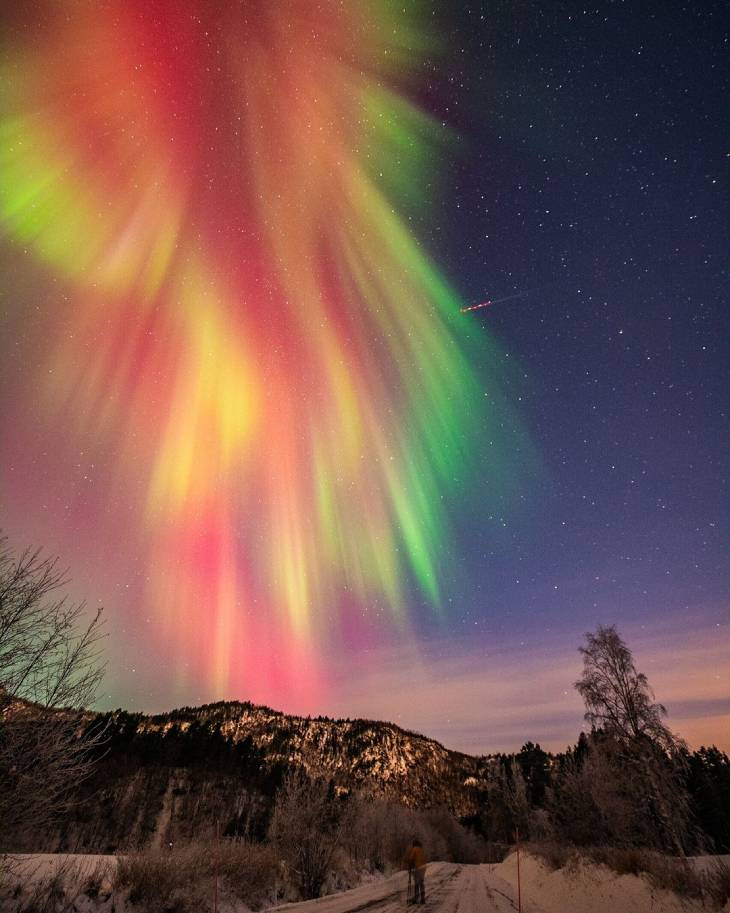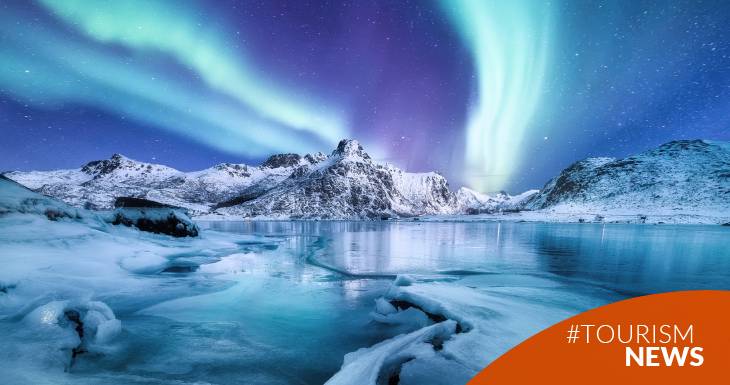What are the Northern and Southern Auroras?
Auroras, both borealis and australis, are light emissions that occur in the Earth's upper atmosphere, specifically in the ionosphere, when charged particles from the sun (protons and electrons) collide with the gases present in this atmospheric layer. These collisions energize oxygen and nitrogen atoms and molecules, which then release that energy in the form of visible light.
These celestial wonders, also known as the "Northern Lights," attract travelers and nature lovers from all over the planet.
Would you like to know where you can observe them more frequently and clearly? These are the places to enjoy them:
Aurora Borealis: Occurs in the northern hemisphere and is known as the "Aurora Borealis"
Spring (March/April) and autumn (September/October) is when the greatest auroral activity occurs.
- Norway: The cities of Tromsø and the Lofoten Islands are popular destinations to observe this phenomenon.
- Sweden: Abisko, known for its unique microclimate, offers excellent opportunities to see the Northern Lights.
- Finland: Rovaniemi and the Lapland region are highlights.
- Iceland: The region around Reykjavik and Thingvellir National Park are famous for their impressive exhibits.
- Canada: The Yukon, Northwest Territories and Nunavut areas.
- Alaska (USA): Fairbanks is one of the best places to see the auroras in North America.
Aurora Austral: It takes place in the southern hemisphere and is called "Aurora Australis"
The aurora australis does not follow the same seasonal variations as the northern lights, and it is possible to see it throughout the year, although winter - from June to August - is the best time when the nights are longest.
- Antarctica: Although it is less accessible, it offers impressive spectacles.
- Australia: Tasmania is the best point in Australia to see the aurora australis.
- New Zealand: The Southland region and Stewart Island are prime spots for this phenomenon.

Differences between the Northern and Southern Auroras
The most obvious difference is its location; The northern lights occur near the North Pole, while the southern lights are observed near the South Pole. The northern lights are generally more accessible and, therefore, better known and seen by travelers. On the other hand, the aurora australis, although equally spectacular, is seen in less inhabited and more difficult to access regions. While both types of aurora are caused by the same physical process, the intensity and color can vary depending on atmospheric composition and local weather conditions. The northern lights often show greens, pinks, reds and purples, while the southern lights also feature these colors, but observers often report a greater predominance of red and purple hues.
Did you know that there is a real-time guide that tells you where to see the auroras?
It's called Aurorasaurus and it's an innovative platform that allows enthusiasts and scientists around the world to track and observe auroras in real time. Developed with the support of NASA Citizen Science (@DoNASAScience) and the U.S. National Science Foundation (@NSF) maps the northern and southern lights using reports and also answers any questions you may have about them.
Citizen participation is what drives Aurorasaurus forward. How? When a person sees an aurora, they only have to report it through the project's app or its website. This indication appears published in a kind of timeline awaiting verification by another user in the community. The location of the observation must be indicated, when it began, when it ended or if it is still ongoing, its colors, the type of aurora, its position in the sky and its level of activity.
A map appears on the website with icons that identify the auroras that have been verified, those that have been denied, and those that are pending confirmation.
Technology, through tools like Aurorasaurus, has made tracking and observing auroras more accessible and accurate than ever. So plan your next trip and let the northern or southern lights transport you to a world of wonder and indescribable beauty.


